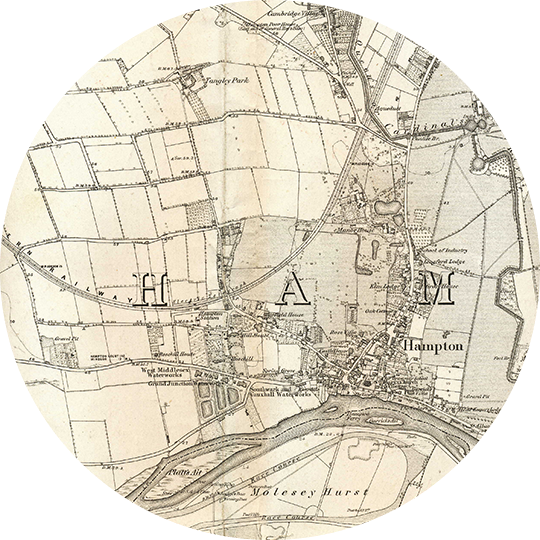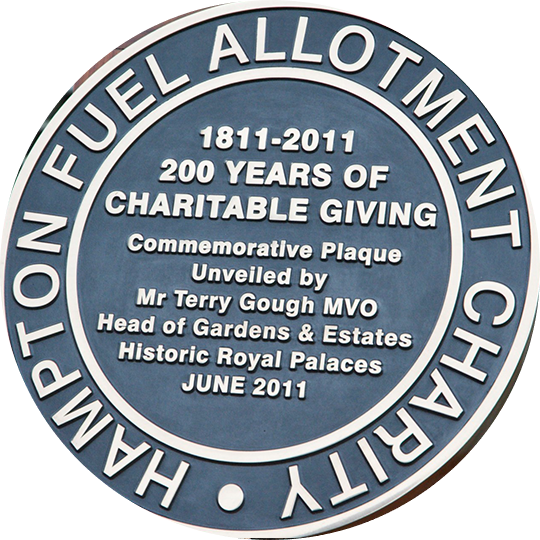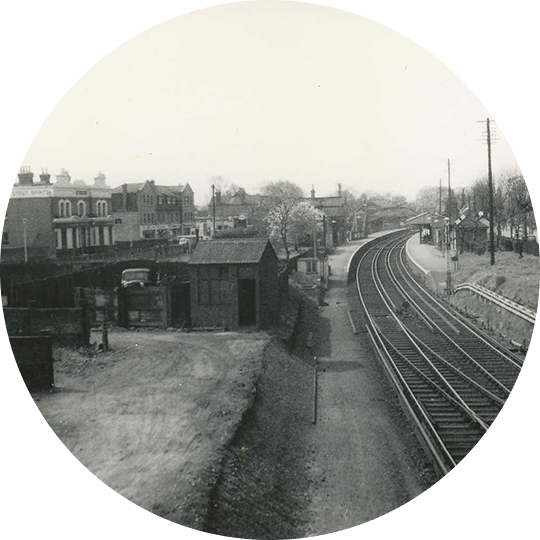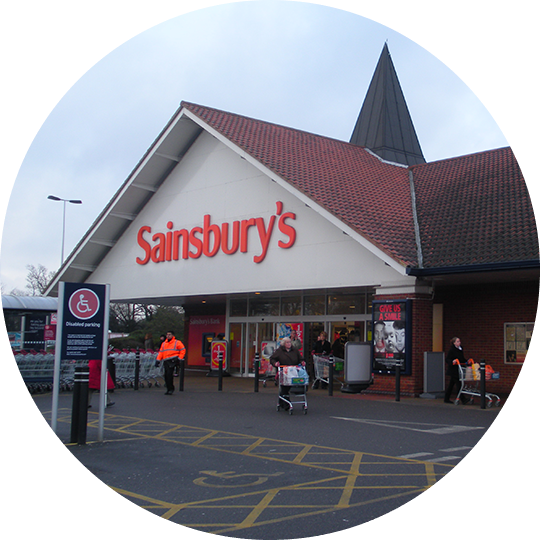Our History
Hampton Fuel Allotment Charity was established by an Act of Parliament in 1811, when land owned by King George III in the ancient town of Hampton was donated to the parish of St Mary’s Church.




Hampton Fuel Allotment Charity was established by an Act of Parliament in 1811, when land owned by King George III in the ancient town of Hampton was donated to the parish of St Mary’s Church.




The Hampton Fuel Allotment Charity was formed by Act of Parliament dated 31st May 1811 during the reign of King George III. The purpose of the Act was to clarify land ownership and agree boundaries. Once achieved, land could be enclosed then cultivated to increase its productivity and value. This activity was being repeated across the country. In the Parish of Hampton, however, the King was Lord of the Manor, with rights of the soil and a claim to royalties from all common and wastelands.
It was during this period of change that the Charity was created to ensure the continued allocation of poor relief across the Parish of Hampton. Back in 1811 the Parish consisted of two main areas of population - Hampton village, based round St. Mary's Parish Church, and Hampton Wick, based round the Middlesex bank of Kingston Bridge. Hampton Court Palace was a small town in its own right, particularly when the King's Court was in residence.
The Parish was already responsible for poor relief and managed a poor house or workhouse at the junction of Hanworth and Uxbridge Roads. It had only six bedrooms to house up to 40 people. The Vestry supervised its running until 1819 when a committee assumed control. In 1838 it became part of a much larger Kingston Union which took over responsibility for such matters. The old workhouse was demolished in 1846.

The Vestry, consisting of the Vicar of St. Mary's Church, two Church Wardens, a Constable, an overseer of the poor and a surveyor of highways ran the Parish, together with the Manorial Court. All were locally elected volunteers, and it was the Church Wardens' task to allocate charity.
The 1811 Parish population was around 4,000 inhabitants of which only a small number were termed poor. With the passing of the Act it became the job of Thomas Thorpe and John Burcham, as Commissioners, to assign land to those with a legitimate claim. In so doing the historic rights of the poor to graze animals and collect timber were lost.
As compensation for this loss of poor rights a piece of wasteland was allotted to the Vestry, the rent from which was to be spent on the purchase of coal or other fuel for the poor. The Commissioners could earmark between 15-25 acres of land for this purpose. They chose 15 acres - two-thirds for the poor of Hampton and the remaining third for Hampton Wick. The land was at the extreme northwest corner of the Parish and had been part of the very extensive Hounslow Heath. Its northern boundary was the Uxbridge Road and its southern border the Longford River (an artificial waterway built to supply water to Hampton Court).

In 1831 St. Mary's was rebuilt and St John's Church Hampton Wick was opened to meet the needs of a growing community. In 1863 Hampton Wick split from Hampton and formed its own Local Board of government. That Board took control of the 5 acres of land for its poor. After World War 11 the local authority compulsorily purchased the property to build council housing.
Development continued and quickened during the second half of the 19th century with the arrival of the water companies and London & South Western Railway. Farming gave way to market gardening and nurseries that could supply the London markets by rail with a wide variety of produce.
The population continued to grow steadily and another Parish Church was consecrated in 1863 - St. James's in Hampton Hill. A third new Parish Church, All Saints, opened in 1908. By 1912 there were 42 nurseries and market gardens. Gradually, over the next 60 years, these fell into decline and were sold, mostly for housing, and by 1973 none remained.
Few of the Charity's records from the 19th and early 20th century survive. We do know that fuel grants continued and the land was rented to various tenants. By the 1960s the site was known as St. Clare's Nurseries. The lease, signed in 1964, brought in an annual rent of 250 which was increased in 1971 to 500 per annum. Conscious of the compulsory purchase of adjacent sites the Trustees began to think about the land's development to maximise its earning potential.

As coal declined as the primary fuel of domestic heating the Trustees discussed how best to distribute fuel grants in the future. By 1976 it was decided to give £5 cash donations to the Charity's beneficiaries. Three years later there were 84 beneficiaries, each in receipt of a £20 grant. Both the value of the grants and the number of beneficiaries steadily increased during the early 1980s.
By 1984 around 135 beneficiaries received a grant of £35, for example. However, in 1985 the Trustees decided to sell the land and terminated the lease arrangements. They also decided not to invite further applications.

The Charity faced something of a crisis during the summer of 1986 with no discernible income and only £770 in the bank. The decision was taken to sell the land but this in turn met with opposition and controversy in 1987. The situation was finally resolved in the High Court. The outcome meant that Sainsbury's, the supermarket chain, could buy the land. The Charity's flagging fortunes were fully revived in 1989 with a cheque for 21.6 million.
In advance of the final sale, the Charity Commissioners allowed the employment of paid staff and extended the area of benefit from the Ancient Parish of Hampton to Twickenham and the remainder of the London Borough of Richmond upon Thames. The deed, dated July 1989, further extended the original of August 1981. The 1981 charter determined the nomination of Trustees; one from each of the three Hampton Parishes, three from the London Borough of Richmond (successor to the Hampton Vestry, the Hampton Board, the Hampton Urban District Council and the Borough of Twickenham), and four Co-optative Trustees. The Vicar of St. Mary's was ex-officio a Trustee, a tradition going back to 1811.
Records reflect the Charity's expanding role beyond that of traditional fuel allotment. In 1981 the Charity provided some bed linen for one applicant while 15 holiday grants were awarded to blind and disabled petitioners in 1987. The following year saw the Charity provide the first "Life-Line" machines, installed personally by the Trustees.
At the end of 1991 the Charity Commissioners agreed to widen the Trustees' powers of investment.
In 2005 Trustees amended the five deeds with Charity Commission approval and produced a single consolidated document.
Today, though much has changed, the Charity maintains a clear link with the original 1811 Act that set out to compensate the poor for their loss of rights. With wide investment powers, an increased area of benefit and a substantial remit for allocating grant aid, the Charity remains true to its roots, “for ever in Trust" for the benefit of the people of Hampton and beyond.
